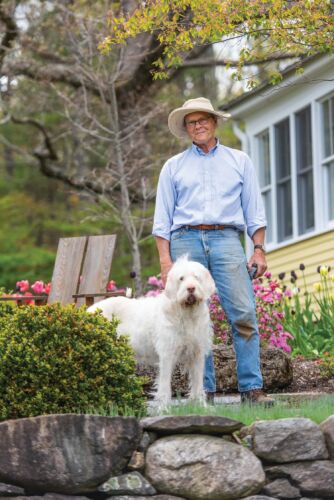
For Bruce Lockhart, the second time was the charm. When a realtor first brought him on a site visit to Swift River Farm as a prospective buyer, he immediately said, “Forget it.” The house was badly built from scrap lumber, and the land was stripped. Any natural resource that the previous owner could possibly exploit was lumbered, dismantled, and sold, including the pine forest and stone walls. But somehow, Bruce ended up touring the downtrodden property a second time to find struggling spring wildflowers studding the fields—and that’s when his perspective changed. He became determined to rescue the seemingly hopeless Massachusetts property. Together with his partner Gus Block, he decided to adopt the lost cause and turn its life around—you might even say he helped the land find its soul.
From the start, Bruce poured himself into all 87 acres in an effort to make every square foot of land shine—but he knew he had to view it as a marathon rather than a sprint. As a medical doctor in New York City, he could only work on the weekends. Every Thursday night, Bruce would hit the ground running. “I would park the truck with the headlights shining on the garden so I could plant under the high beams,” he says.
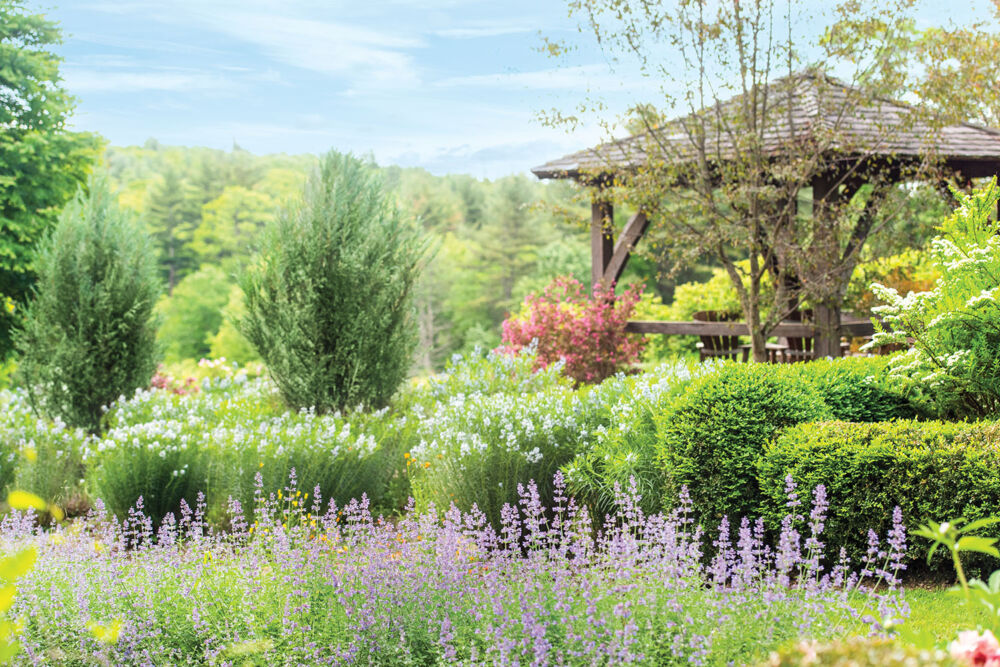
As the house underwent a complete renovation that also doubled its size, Bruce focused on installing 30 heirloom apple trees followed by 80 boxwoods. But those sentinel plants were just the beginning as he took on projects that entailed years of prep. The woodland garden, for example, required season after season of amendment before the soil could be carpeted by the incredible lexicon of wildflowers that now flourishes in its shade. The landscape also includes a woodland ramble, spring displays, a massive rock garden, a vegetable garden, cutting beds, a pond garden, and a pollinator meadow. He jokes that “this is what happens when you have a burning desire to create every type of garden imaginable.”
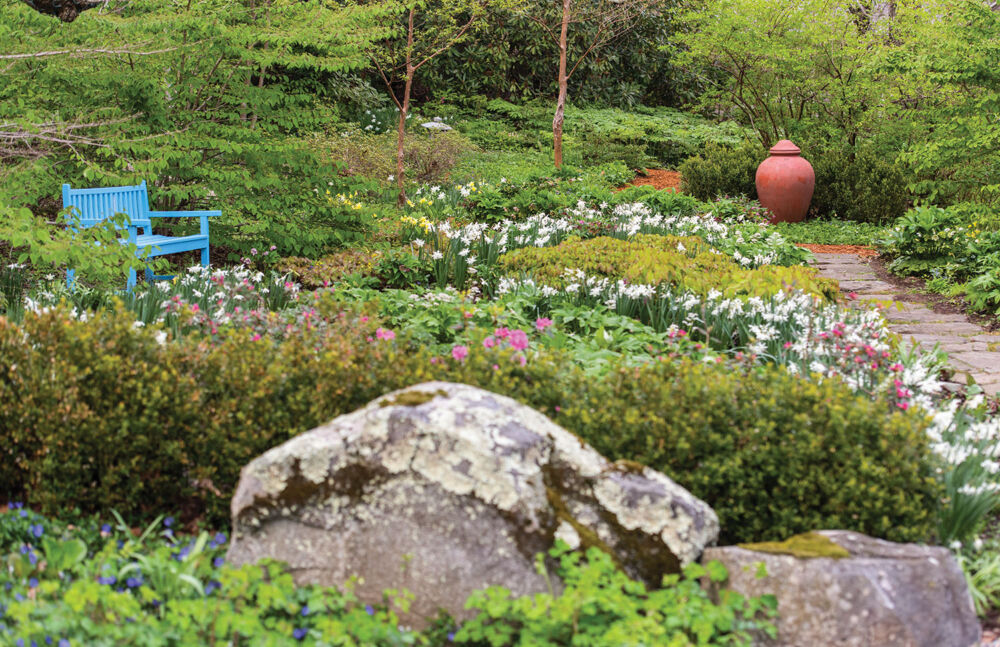
The path leading into the woodland garden was one of the first projects Bruce tackled upon purchase. Given a semicircular driveway that curved in front of the house, he began by eliminating the rather prosaic introduction to Swift River Farm and creating a multi-textured garden of epimedium, hellebores, and mukdenia.
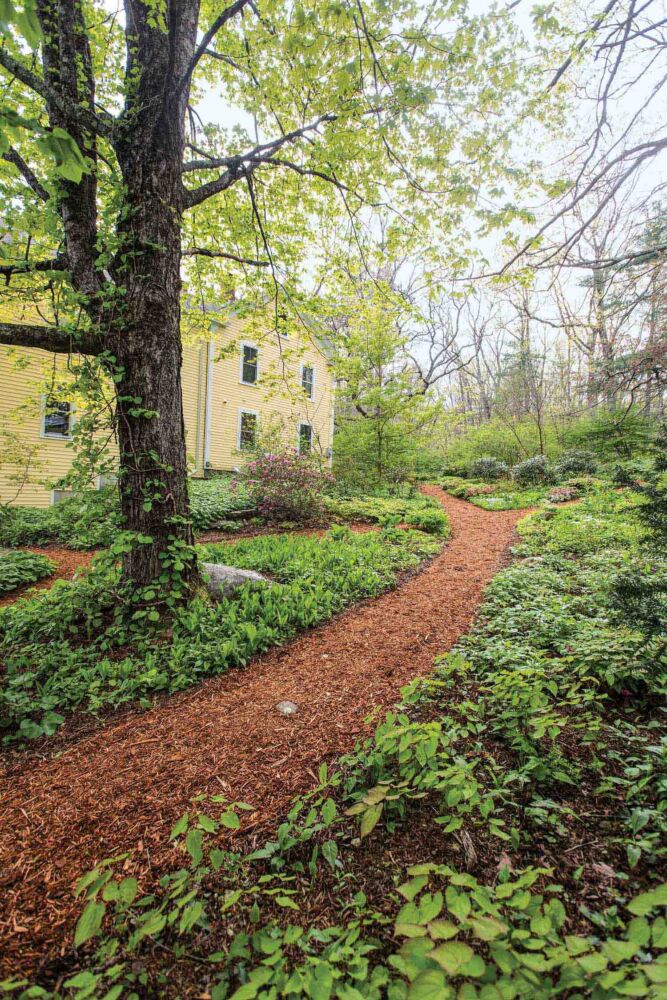
Then came a series of perennial gardens filled with Bruce’s favorite plants, such as nepeta, peonies, and azaleas—all accented by trimmed boxwoods and other hedging. “That was my ‘nothing is too difficult to attempt’ stage,” Bruce jokes of the maintenance required to sustain perfection in that space. He also added an ambitious vegetable garden that was ultimately reduced in size when it proved too large for the couple’s needs. An old Lord & Burnham greenhouse became the host for starting seedlings. Bruce then turned up some mammoth boulders to build a rock garden, populating it with rarities started from seed in the greenhouse. The rock garden became a full-season favorite that expanded considerably, spilling out into a garden focused on primroses. Helping with all these endeavors was assistant Beverly Duda, who lent her expertise and hard labor.
As the garden grew offshoots, Bruce began to realize that it needed cohesion, as well as better movement connections between the spaces. In 2010, he called garden designer Gordon Hayward, who brought the landscape into a more efficient dialogue while also creating a Koi pond and a gazebo as a place to admire the surrounding landscape. “That’s when the garden really came together,” Bruce says. “Gordon took a series of disparate spaces and gave them continuity.”

In addition to the many plants and rocks, Swift River Farm is home to a flock of chickens and several beehives. Thinking that his insect friends might love further fodder beyond the orchard, Bruce decided to try a meadow. Gordon oversaw the project which entailed the installation of 1,600 plants in undulating beds at the crest of a hill. Helen O’Donnell from Vermont’s The Bunker Farm also helped, and her expertise is still called upon periodically as the meadow continues to evolve and mature. “It has always walked the line between a meadow and a garden,” Helen says. “We are continually evaluating the mix to weed out plants that become too big and thuggish. Everything needs to peacefully coexist.”
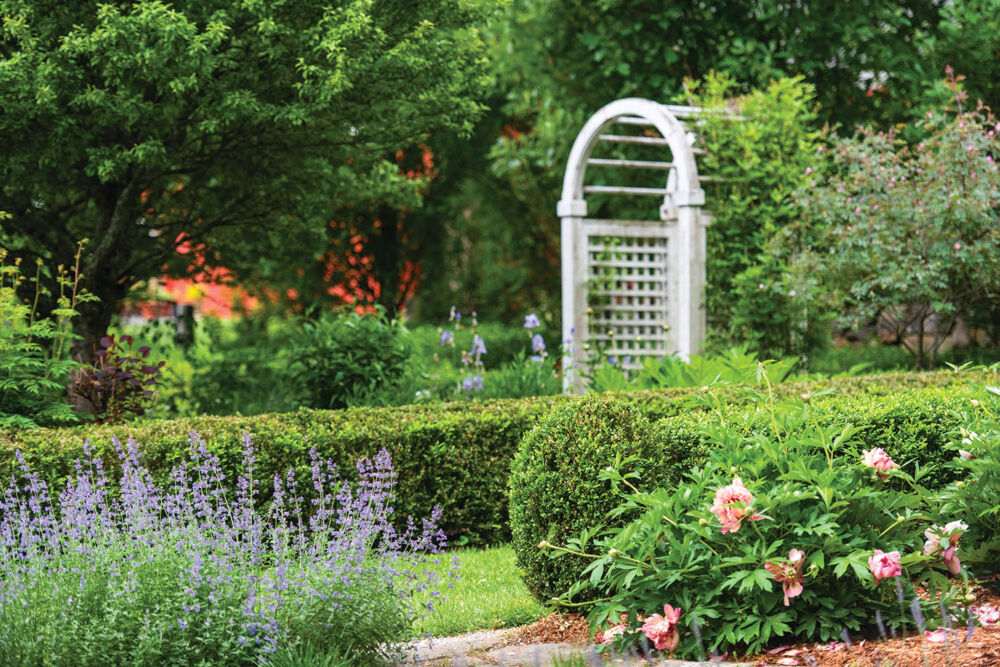
The result is an incredible tapestry that changes every year and throughout the seasons, with pollinators of all descriptions reaping the benefits. It’s a wonderful weave that is forever evolving. In fact, Helen paid Bruce the highest compliment: “He is the most adventurous gardener.” The transformation of Swift River Farm from its beginnings in 1998 is proof positive that not only does land have a soul, it also shows gratitude.
By Tovah Martin
Photography by Kindra Clineff
